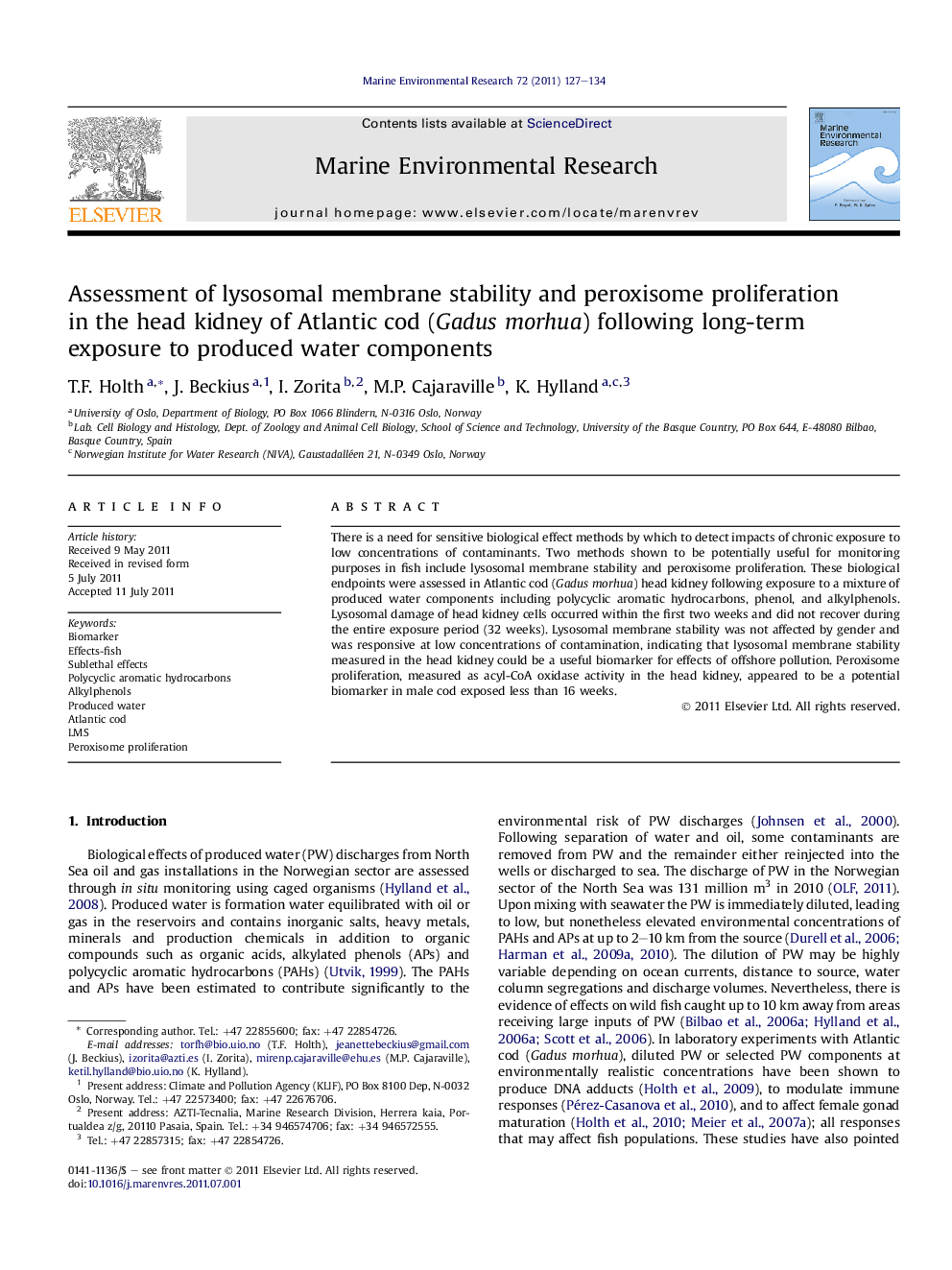| Article ID | Journal | Published Year | Pages | File Type |
|---|---|---|---|---|
| 4551175 | Marine Environmental Research | 2011 | 8 Pages |
There is a need for sensitive biological effect methods by which to detect impacts of chronic exposure to low concentrations of contaminants. Two methods shown to be potentially useful for monitoring purposes in fish include lysosomal membrane stability and peroxisome proliferation. These biological endpoints were assessed in Atlantic cod (Gadus morhua) head kidney following exposure to a mixture of produced water components including polycyclic aromatic hydrocarbons, phenol, and alkylphenols. Lysosomal damage of head kidney cells occurred within the first two weeks and did not recover during the entire exposure period (32 weeks). Lysosomal membrane stability was not affected by gender and was responsive at low concentrations of contamination, indicating that lysosomal membrane stability measured in the head kidney could be a useful biomarker for effects of offshore pollution. Peroxisome proliferation, measured as acyl-CoA oxidase activity in the head kidney, appeared to be a potential biomarker in male cod exposed less than 16 weeks.
► Atlantic cod was exposed to a selection of water soluble oil-derived contaminants. ► Lysosomal membrane stability and AOX activity were assessed in the head kidney. ► Lysosomal membrane stability appeared to be a useful biomarker for chronic exposures. ► AOX activity was responsive in males after 2 weeks but adapted to exposures.
